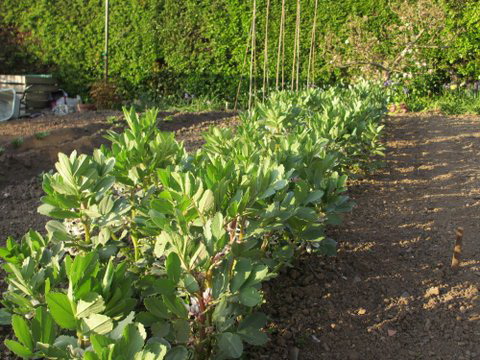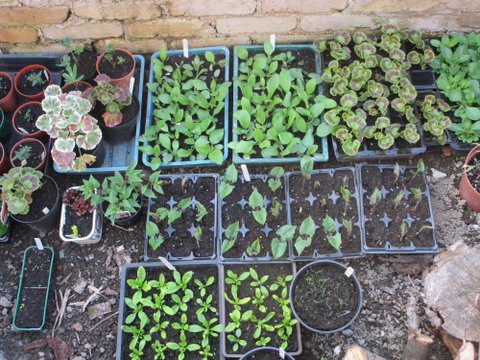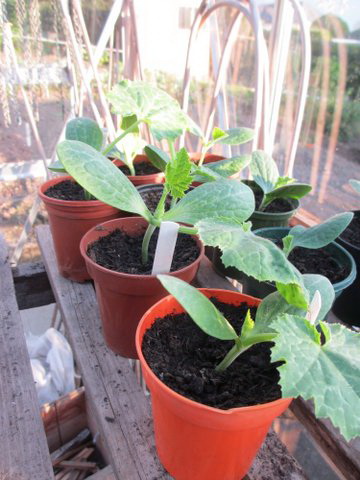From our Correspondent
April
At long last it has stopped raining and real gardening weather has arrived. After the cold and the wet of the earlier months this is excellent news , but you suddenly realise that the down side of this is there is too much to do!
What do I put in first? Where shall I put it? What is happening in the greenhouse, and have I got all the seeds I need? As I said this all seems a bit too much at times, but we all know that spring is a very busy time for the gardener, and as they are usually quite dogged and persistent people it will all get done……eventually.
Of course, as the weather gets warmer things start to grow. My broad beans which have survived the winter suddenly start to become taller, and shortly I will have to put up my stakes and strings to stop them blowing around too much. Other good news is that the early potatoes are showing through, and I have now been able to ‘ridge up’ the first earlies. This is an important job, and I am always impressed that after I have covered the new young plants completely with soil, very shortly they push through that cover and grow into strong plants that will produce those all-important first creamy new potatoes that are so delicious straight out of the ground.
Those small, at times ragged strawberry runners I put in in the autumn also suddenly start to grow and look very business like, and I am already anticipating their delicious crop with too much cream and sugar in the summer. I know the government tells us we all eat too much sugar, but come on, these are strawberries, and you can’t mess around. So there!
I have some very smart rows of onions which are now growing and look very neat and tidy next to a row of shallots which are also doing what shallots are supposed to do. All this is very encouraging and perhaps I was getting depressed for no reason.

Autumn-sown broadbeans
So, what next. I have put in a double row of main crop carrots, and I usually sow ‘Autumn King’ which will sit in the ground for months and well into the winter if you have any left. Now of course I want it to rain to get them started. The enemy of carrot growing is the carrot fly, and although you can’t see these little blighters they can ruin a decent carrot crop. As soon as the seed is in the ground I therefore put up some protection in the form of a tent like structure using a protective mesh – I think it’s called ‘enviromesh’ – which does seem to do the trick. It is a bit of a tiresome job, and you have to move it to do any weeding, but if it keeps those little b*******s at bay it is well worth the effort. Just think fresh sweet carrots with your Sunday lunch!

My cold frame
Another regular task at this time of year is ‘digging the bean trench’ This is in preparation for the runner beans which have now been planted in the greenhouse and are poking their snouts through the compost. Beans like to have moisture holding material under them and they are also greedy plants which need as much nourishment as they can get. So, after you have decided on where they are to go, and remember they will throw a lot of shade in the summer months, the trench is dug. This will be the length of your row and about a good spade depth, plus a bit. The glory of the bean trench is that once dug you leave it open and fill it up with garden waste, grass mowings, and basically turn it into a little compost pit which will all be covered when you come to plant your beans. I knew an elderly lady once who used to keep her copies of the evening paper and when the time came would soak them for a while and then put them in her trench together with her garden waste! She always had a good crop of beans, so who are we to judge!

Courgettes
Other crops to sow include some beetroot, a good row of main crop peas, and also some ‘mangetoout’. All delicious, and peas are particularly useful for the freezer if you have excess. The downside is that once they appear you have to put up something for them to climb. What with strings for the broad beans, poles for the runner beans, nets for the peas to climb and nets to cover the strawberries the gardener has to be both practical and imaginative without making the garden look like Steptoe’s Yard! One of my little ‘things’ about my garden is that if at all possible I do my best to avoid using plastic, and I particularly hate that plastic netting that is sold to support peas and beans! It always gets tangled. Some years ago, I inherited some monofilament netting similar to that used by fishermen, and that is both strong and easy to put up. The other point is that it has to be firmly staked so that it doesn’t blow down again!
So, there is lots to do at this time of year and I am sure we all have our own way of doing things. The joy of growing your own is the anticipation of fresh and tasty produce, that hasn’t been flown in from Kenya, and the satisfaction that you have done it all yourself. In my opinion the sight of a full and bursting vegetable garden in June and July is one of the finest sites of the summer…..apart from that first bowl of strawberries of course!
Maurice Bard
